I am Setsuna on Switch is a visual match for PS4
1080p on both, with frame-rate the only tangible difference.
The gulf in raw rendering power between Switch and PlayStation 4 means that Nintendo's hardware is unlikely to be receiving the latest current-gen triple-A blockbusters. However, less technologically ambitious titles still have much to offer - and these games are a closer for match for Switch's capabilities. On top of that, the new Nintendo machine's ability to double up as both home console and handheld can help to offset compromises in technology elsewhere: what you lose in terms of sheer processing power is mitigated by the ability to play whenever you want, wherever you want. Square-Enix's I am Setsuna is a fascinating example of what Switch can offer on multi-platform titles.
Originally released on the PS4 early last year and based on the popular Unity engine, I am Setsuna is an appealing attempt to recapture the spirit of the 16-bit era JRPGs, with a fairly simplistic but well thought-out visual style. There's some nice attention to detail here, with characters carving out geometry-based paths through the snow when exploring the game's wintery environments.
Steam bellows from chimney tops from village houses, while snowflakes gently fly through the air. Dynamic shadowing is also used fairly liberally too, with large bosses casting striking silhouettes across the surrounding scenery as they arrive and do battle. These little touches help to connect the player with the game world, and complements the use of simplistic visuals and gameplay that initially feels rather basic compared with modern titles.
It's all part of the charm, and the core visuals are very closely matched on PS4 and Switch, with both using the same assets across the game - a benefit of the game's modest visual style and a perfect example of the kind of game likely to provide a very close graphical experience on Nintendo's new console.
Texture work, character and environment modelling are the same between both platforms, and in most cases the effects work is also like for like, so everything from the snow flying in the air, to smoke and particles are rendered to the same standards. It's only in a few places where small differences in lighting occur, and most of the time both versions hand-in identical levels of visual quality, which is good to see.
A native 1080p presentation is delivered on PS4 and in Switch's docked mode, with both featuring clean imagery due to the game's simplistic style and lack of complex geometry. It's a match down to the pixel level and both versions feature the same level of image quality when displayed on a 1080p screen.
As expected, resolution drops to 720p on Switch's portable mode, perfectly matching the machine's LCD screen pixel-by-pixel. The resulting image is naturally sharp and in other areas graphical quality is a match for the game running in docked mode. There are no downgrades when running on the go, so the visual experience is very similar to docked mode. It's also worth noting that menus and on-screen text appears clear and easy to read, with the HUD elements displayed at a reasonable size on the machine's 6.2-inch screen.
I am Setsuna is almost a complete visual match across both platforms, but there is a noticeable difference with both versions in motion - the PS4 game runs at a significantly higher frame-rate. The action moves at a slick 60fps on Sony's console, in line with performance seen on most 16-bit sprite-based titles of the era. This results in a very fluid gameplay experience where the environments scroll across the screen smoothly, with both combat and exploration having a polished feel throughout.
It's a clear upgrade over the Switch version, which targets a more common 30fps update instead. However, the reduction in frame-rate does have obvious benefits for Nintendo's weaker console. Halving the frame-rate allows the developers to keep the level of graphical quality high when running in both docked and portable modes, resulting in a virtually identical looking game in most areas.
It's an acceptable trade-off for a turn-based RPG where crisp controller responses are not required to thoroughly enjoy the game, and the reduction in performance has little meaningful impact on gameplay. Of course, there are some downsides to running at a lower frame-rate. I am Setsuna is a top-down RPG and as such there is plenty of lateral movement as the camera pans across the environment while exploring, and at 30fps, there's noticeable judder. It can be distracting at times and is something that doesn't happen on the PS4, which has a perfect match with the display's refresh.
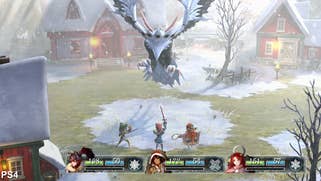
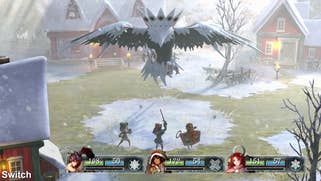
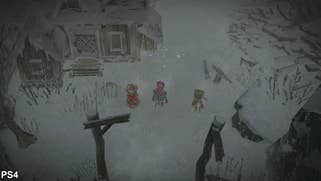
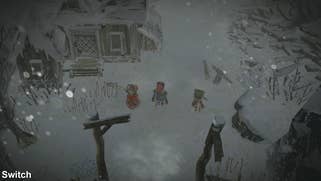
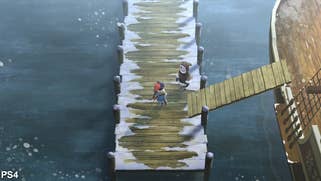

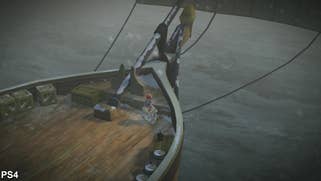
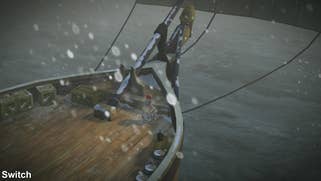
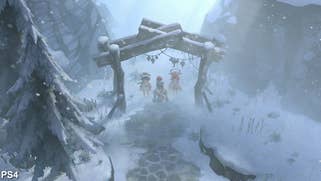
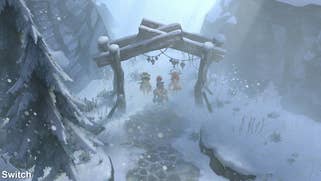
On the plus side, neither version suffers from frame-rate drops during regular gameplay, so the experience is mostly locked at the intended frame-rate. On rare occasions performance briefly dips on both platforms after transitioning to a cut-scene of sorts, triggered by the battle menu screen loading up just before a boss fight, but once this passes the action remains smooth with no further hitches. As one might expect, the higher frame-rate makes the PS4 game the best choice for at home play, but the gameplay experience on Switch is still very good and doesn't feel too compromised due to the reduction in smoothness.
Overall, with well-written characters and a quaint visual style, I am Setsuna works well as a throwback to 16-bit era RPGs, tackling mature themes of sadness and death while providing a gameplay experience that is rarely seen on modern systems. While the combat can be rather repetitive, it's still a solid experience that fans of the genre should enjoy, and one that translates well over to Nintendo's Switch hardware.
You're essentially getting the same game with practically the same baseline level of graphical quality, but with the ability to disconnect from the TV and keep playing on the go. It's a great example of a smaller title ported over to the hardware with very little in the way of compromises that distract from the gameplay.
While the reduction in frame-rate to 30fps does lead to a less fluid experience compared to the 60Hz PS4 version, the slow nature of the game means that little is lost in the gameplay experience, with the added benefit of being able to continue your adventures on the move. The PlayStation 4's smoother frame-rate is more reminiscent of the sprite-based 16-bit titles the series draws influence from, but the slow nature of the game means that little is lost in the gameplay experience, with the added benefit of being able to continue your adventures on the move. But perhaps the bigger point is that I am Setsuna remains a really worthwhile game regardless of the platform - worthy of its Eurogamer Recommended badge.

